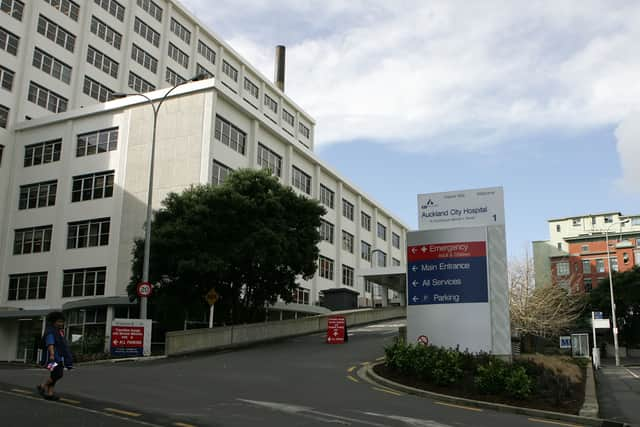A surgical instrument the 'size of a dinner plate' was left in a woman's body in New Zealand
and live on Freeview channel 276
A surgical device the size of a dinner plate was left in a woman's abdomen for 18 months after she underwent a caesarean.
The Alexis wound retractor - a soft tubal instrument used to hold open surgical wounds - was left in the New Zealand mother after her baby was delivered at Auckland city hospital in 2020.
Advertisement
Hide AdAdvertisement
Hide AdDuring ths time, the woman had severe pains and made several trips to the doctor before it was found on a CT scan.


Te Whatu Ora Auckland, formerly Auckland District Health Board, initally claimed it had not failed to exercise reasonable skill and care towards the patient, who was in her 20s.
But New Zealand's Health and Disability Commissioner, Morag McDowell, disagreed, in her report released on Monday.
She said: "It is self-evident that the care provided fell below the appropriate standard, because the [retractor] was not identified during any routine surgical checks, resulting in it being left inside the woman's abdomen.
Advertisement
Hide AdAdvertisement
Hide Ad"Staff involved have no explanation for how the retractor ended up in the abdominal cavity, or why it was not identified prior to closure."
The Alexis wound retractor is a large object made of transparent plastic fixed on two rings and usually removed after the uterine incision is closed in a C-section operation and before the skin is stitched up.
But because it was a "non radio-opaque" item, it could not be detected in X-ray scans.
The team at Auckland City Hospital who attended to her in 2020, was a surgeon, a senior registrar, an instrument nurse, three circulating nurses, two anaesthetists, two anaesthetic technicians and a theatre midwife.
Advertisement
Hide AdAdvertisement
Hide AdA count of all surgical instruments used in the procedure did not include the AWR, possibly “due to the fact that the Alexis Retractor doesn’t go into the wound completely as half of the retractor needs to remain outside the patient and so it would not be at risk of being retained,” a nurse told the commission.
But the team had replaced the first Alexis wound retractor with a larger one. This second retractor was left in the woman's abdomen but it's unclear how in this instance the device ended up fully inside the woman.
It was eventually removed from the woman’s abdomen in 2021, approximately 18 months after the initial procedure and a number of visits to her GP. On one occasion, her pain was so severe that she visited the emergency department at Auckland city hospital.
The report notes that the case is “remarkably similar” to another instance, and said it was the second time in two years that a device had been left in an Auckland hospitals' patient.
Advertisement
Hide AdAdvertisement
Hide AdMcDowell wrote that the theatre staff involved in the surgery were genuinely concerned and apologetic upon hearing of the woman’s experience.
She said: “Te Whatu Ora pointed to a lack of expert evidence to support the conclusion that [the code] had been breached and referenced known error rates.
“However, I have little difficulty concluding that the retention of a surgical instrument in a person’s body falls well below the expected standard of care – and I do not consider it necessary to have specific expert advice to assist me in reaching that conclusion.”
In a statement, Dr Mike Shepherd, Te Whatu Ora Group Director of Operations for Te Toka Tumai Auckland, apologised for the error.
Advertisement
Hide AdAdvertisement
Hide Ad“On behalf of our Women’s Health service at Te Toka Tumai Auckland and Te Whatu Ora, I would like to say how sorry we are for what happened to the patient, and acknowledge the impact that this will have had on her and her whānau [family group].
“For ethical and privacy reasons we can’t comment on the details of individual patient care. However, we have reviewed the patient’s care and this has resulted in improvements to our systems and processes which will reduce the chance of similar incidents happening again. We acknowledge the recommendations made in the commissioner’s report, which we have either implemented, or are working towards implementing.”
Comment Guidelines
National World encourages reader discussion on our stories. User feedback, insights and back-and-forth exchanges add a rich layer of context to reporting. Please review our Community Guidelines before commenting.
